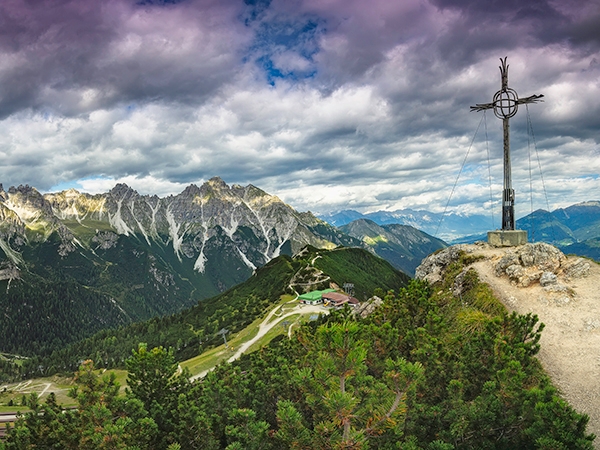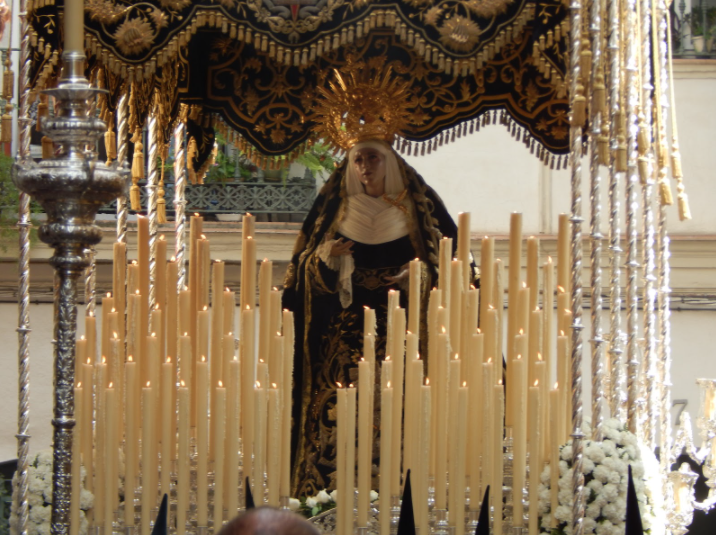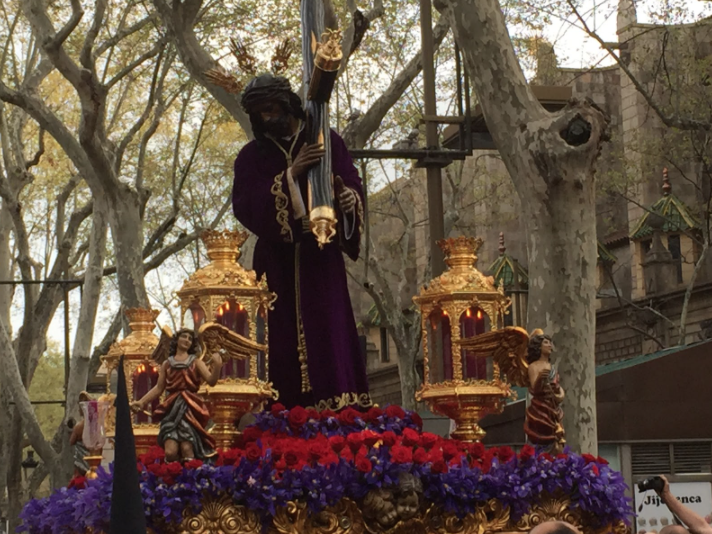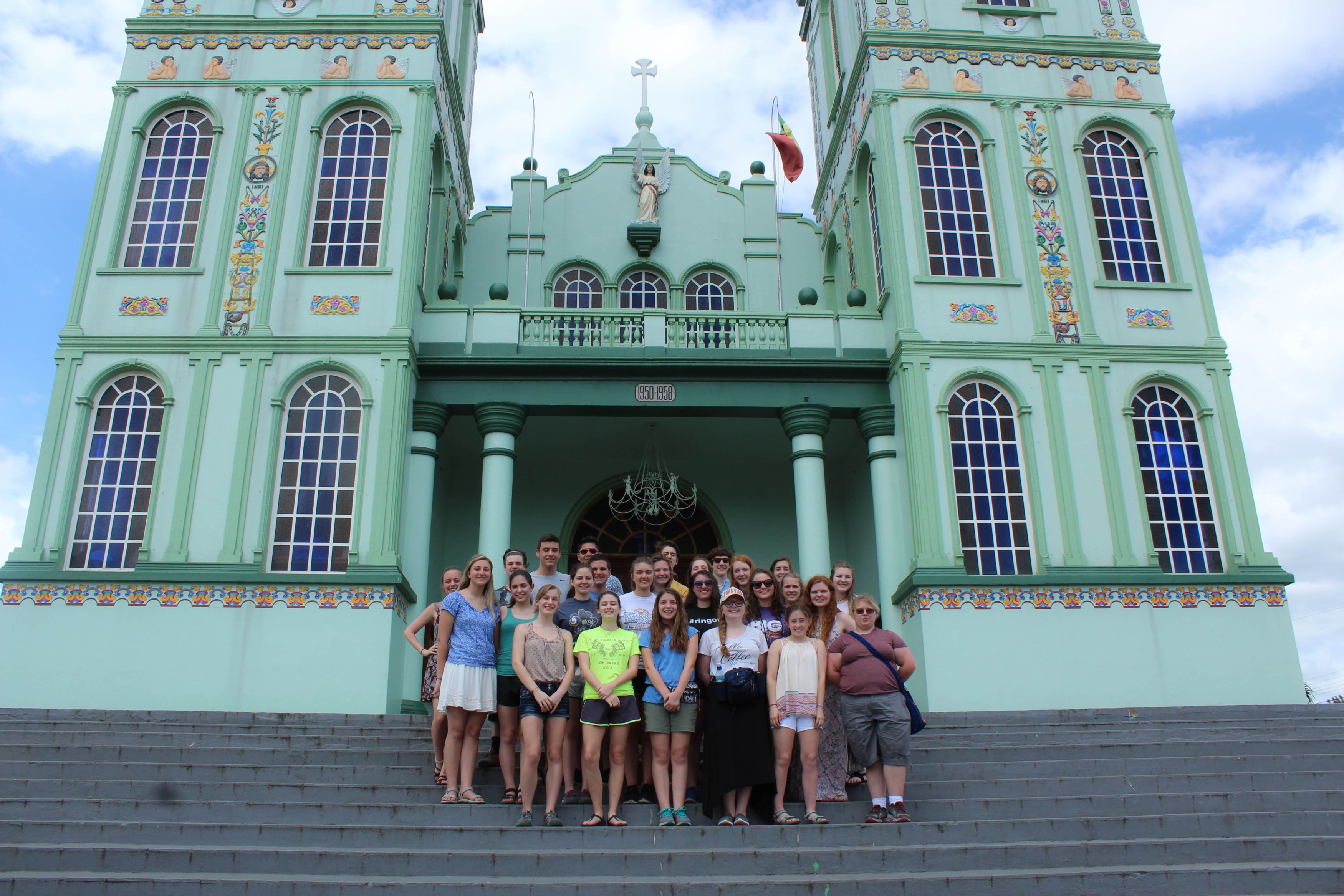Voices Ringing
Celebrating Holy Week with our students around the world

As we prepare to celebrate the most important day on the church calendar, our World Languages faculty and students reflect on some of their favorite Easter memories and traditions from around the world.

Granada, Spain
I have wonderful memories of Semana Santa (Holy Week) in Granada, Spain. It is amazing to watch the locals pour their hearts into every detail to make this time meaningful and memorable. As my students watch the processions, they quickly realize the importance of this Holy Week celebration and the traditions and values that have been around for centuries.
There are large crowds, especially on Holy Thursday and Good Friday along the procession route. As the floats with Jesus or Mary pass by, the crowd is silent out of respect. In Granada, there are 33 cofradias or brotherhoods represented. They plan all year for the one day their brotherhood is represented. Their float represents a scene from the Easter story. If it rains, you can hear the people from that church weeping as they are only given one day to show their efforts, hard work, and faithfulness.

The floats are not on a mechanical device - they are carried by men. It is extremely important for them to move in unison and be similar in height as there are typically hundreds of lighted candles on the float. One of the most memorable moments for me in Granada was when my students and I witnessed a float that was too high to exit a cathedral, so all the men had to fall to their knees at the same time so the float didn’t fall, and crawl out of the church until the float was through the door. Next they all had to rise together and continue to walk for miles around the city! We were all in tears, and we spoke of that experience for years!
Click here to visit a website with a great explanation of Semana Santa in Granada.
-Mrs. Beth Branum

Costa Rica
Spending Easter in Spanish-speaking countries with our students is a blessing. Being able to show them the cultural differences in Catholicism in different places is an honor. I have spent practically every Easter working at Carroll with our students until quarantine this past year. Not only attending Mass, but all the little details of travel are some of my fondest memories working with our students. Our travel coordinator, Beth Branum, always prepares Easter baskets that we travel with and set up to surprise the students on Easter Sunday. It’s the little details and memories that make these trips so memorable!
The most recent trip with the kids to Costa Rica in 2017 reminded me that the students experience more than the typical Holy Week celebrations and traditions while we have them abroad. They saw God and truly experienced His work in so many places, both in the interactions with the people of Costa Rica and in their stewardship and fellowship together while abroad. During that particular trip, students participated in a community celebration while sharing a meal in the countryside, they witnessed a beautiful procession outside a local parish in the city. I look forward to spending many more Easter celebrations with students abroad in Spanish-speaking countries.
-Mrs. Tara Ashworth
Vatican City
The air is filled with the joy of all who can fit into Piazza di San Pietro and the sweet smell of the trillions of flowers that surround the Pope’s outdoor altar. A moment of silence ensues as all recall the previous week, whether it be Good Friday in the Colosseum, the remembrance of the Last Supper, or the joyful proclamation of Palm Sunday. Everyone seems to hold their breath as they glance between the small white speck and the mega-screen projecting the face of the Holy Father. The mass is the same as every other Easter Mass celebrated by the Church around the world, painting a beautiful picture of the universality of the Church (despite any sort of language barrier). After Mass and the Papal blessing, all disperse with a smile on their faces knowing the importance of the Risen Christ and ready to sit back and enjoy the traditional lamb, Colomba di Pasqua, and every other delicious Italian food. Buona Pasqua!
-Tony Gabriele '21
France
Easter on the mainland of France is celebrated in a very similar way as it is here in the United States -- with colored eggs. However, instead of chocolate bunnies, you would find chocolate bells in the grocery stores before Easter. Why? Traditionally, Catholicism holds the view that church bells ring every day of the year to invite Christians to attend the Mass, except at Easter where they do not ring between Good Friday and Easter Sunday in order to commemorate the death of Christ and his resurrection.
Myth in France has it that at this time the bells, with wings attached, flew to Rome to be blessed by the Pope over these two days. Coming home they would randomly drop treats for the joy of children. The bells fly back Saturday night. Sunday morning is the opening of “la chasse aux oeufs” in France, also known as the Easter egg hunt.
Somebody in the family will shout, “les cloches sont passées”, meaning the bells have passed, and the children run outside to hunt for their chocolate eggs.
Usually, families gather for Easter and have a traditional meal of roasted lamb together.
-Mrs. Anita Mischuk
Oaxaca, Mexico
My family goes to St. Mary's church, and Mass is usually longer than normal. Our celebrations at home are very different from Mexico. In Oaxaca, where my family is from, there is a live representation of Jesus' passion and death, and on Domingo de Resurrección (Jesus' resurrection) there is a Mass at midnight that usually lasts for 2 or 3 hours. When the lights go off at the front of the church, there is a closed curtain that opens at midnight with an image of a resurrected Jesus. In Oaxaca, they don't eat meat during Holy Week, so the street tacos are vegetable tacos. My family did adopt the Easter eggs and bunny traditions over time. In Oaxaca, they throw eggs at each other.


